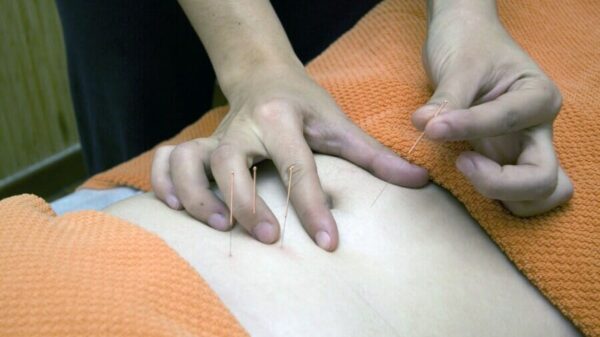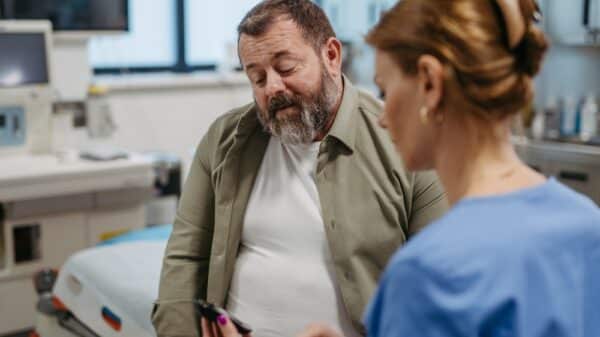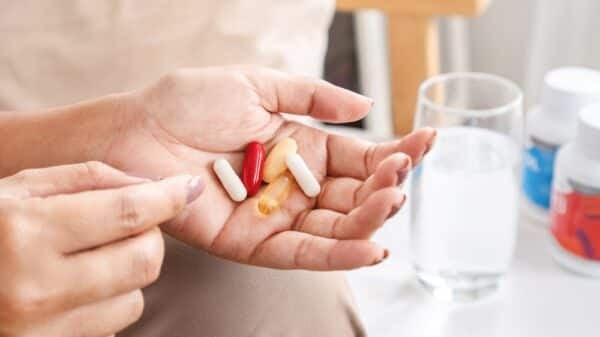“The vaginal microbiome comprises a collection of microbes that coexist harmoniously with individuals in their vaginal environment,” clarifies Jacques Ravel, PhD, a microbiology and immunology professor as well as acting director of the Institute for Genome Sciences at University of Maryland-Baltimore.
For context, the vaginal microbiome encompasses all microorganisms residing both externally around the genital area and within the lower genital tract,mainly in the vagina and cervix1. While it’s common knowledge that a nutritious diet supports gut health, could your dietary choices also influence your vaginal microflora? Here’s what research reveals about nutrition for pelvic health.
First, why is a healthy vaginal microbiome essential?
Dysbiosis—an imbalance between beneficial and harmful microbes—does not only occur in the gut.
When the fragile equilibrium of microorganisms in the vagina is disrupted, one becomes more susceptible to uncomfortable yet prevalent conditions such as bacterial vaginosis (BV). This can lead to irritation and a distinct fishy odor.
Disturbances in the vaginal microbiome2 have also been linked to pelvic pain, urinary tract infections (UTIs), sexually transmitted infections (STIs), preterm deliveries, and even fertility issues3.
What factors influence the vaginal microbiome?
Medications, age, and sexual practices can all have an impact on the microbial composition within your vagina. Additionally, hormonal changes during particular life phases, such as pregnancy and menopause, can also play a role in the vaginal microbiome. Fluctuations in hormone levels can subsequently alter the vagina’s pH. As a quick biology reminder: pH measures how acidic or basic a substance is.
In contrast to the digestive system, where a high level of microbial diversity is beneficial, “in the vagina it’s quite the opposite,” Ravel notes. “Under ideal conditions, the vagina is predominantly inhabited by a select few species of Lactobacilli, such as L. crispatus.”
Lactobacilli bacteria generally produce lactic acid, which helps maintain the vagina’s acidity. Although this may seem odd, it actually plays a crucial role. “The acidity serves an antimicrobial function and hinders the establishment of unwanted microbes in the vagina,” Dr. Ravel adds.
When levels of vaginal Lactobacilli decrease and the vagina becomes less acidic, the likelihood of infection rises. This might partially explain why individuals with higher concentrations of L. crispatus appear to have a lower risk of infections such as BV7 and HIV4.
It’s also important to note that factors such as age and hormonal shifts may interact with racial and ethnic backgrounds, influencing an individual’s vaginal microbiome. For example, individuals of African descent are reported to be less likely to exhibit a microbiome dominated by Lactobacillus, according to an October 2017 study published in Nature.
What foods are beneficial for the vaginal microbiome?
Individuals with vaginas are often overlooked in scientific research, which explains the limited studies focused on nutrition that benefits vaginal health. Nonetheless, there’s a growing body of evidence suggesting that diet plays a vital role in influencing the lesser-known microbiome. Here’s why it matters.
Foods beneficial for gut health are also good for vaginal health
“Just as there is a gut-brain axis, there exists a gut-vagina axis,” explains Dr. Ravel. While it’s unlikely that gut bacteria establish themselves in the vagina, the nutrients that support gut health are generally beneficial for vaginal wellness, too.
“The macronutrient that consistently comes up is fiber,” Dr. Ravel notes. A higher fiber intake fosters greater microbial diversity in the gastrointestinal tract, and a healthier gut appears to correlate with fewer imbalances in the vagina. For instance, initial studies13 indicate that oral probiotics may assist women suffering from bacterial vaginosis (BV).
“This suggests that taking oral probiotics could potentially enhance the composition of the gut microbiome or strengthen the gut barrier,” says Dr. Ravel. “A reinforced barrier means reduced [microbial] leakage into the bloodstream and lower levels of systemic inflammation,” which might help to reduce imbalances in the vaginal environment.
Pass the kimchi, please.
Foods rich in nutrients
A diet abundant in vitamins and minerals will become your vaginal microbiome’s closest ally.
Research has shown that inadequate intake of micronutrients such as vitamins A, C, E, and D, along with beta-carotene, folate, and calcium, can heighten the risk of developing BV6.
To maximize your micronutrient intake for optimal vaginal microbiome health, follow the age-old advice to ‘eat the rainbow.’ Incorporate a diverse array of colorful plant foods and protein options into your meals for sufficient fiber, vitamins, and minerals.
Image Source: Velista production / Shutterstock

































